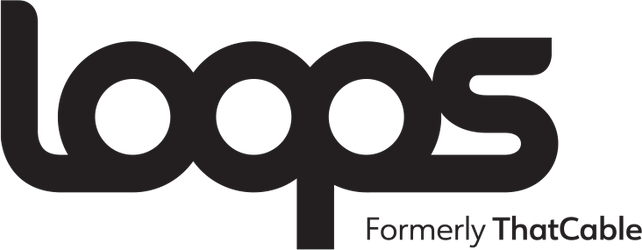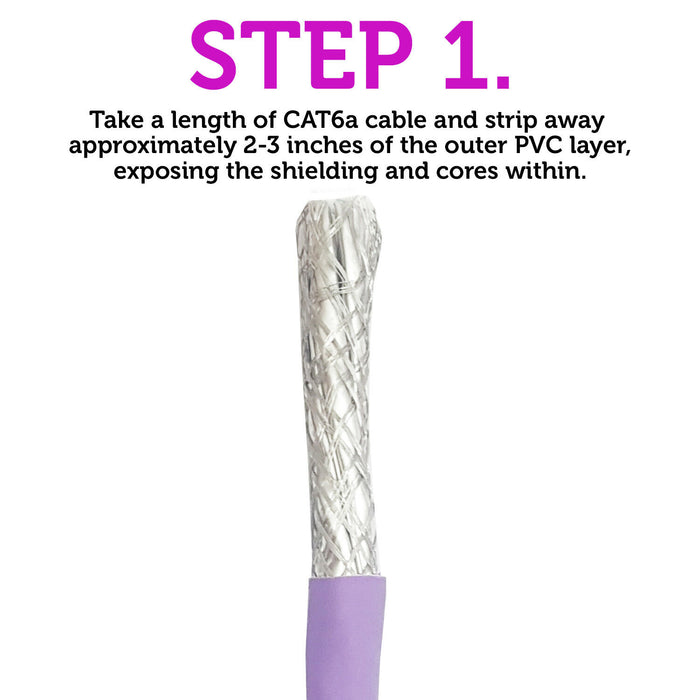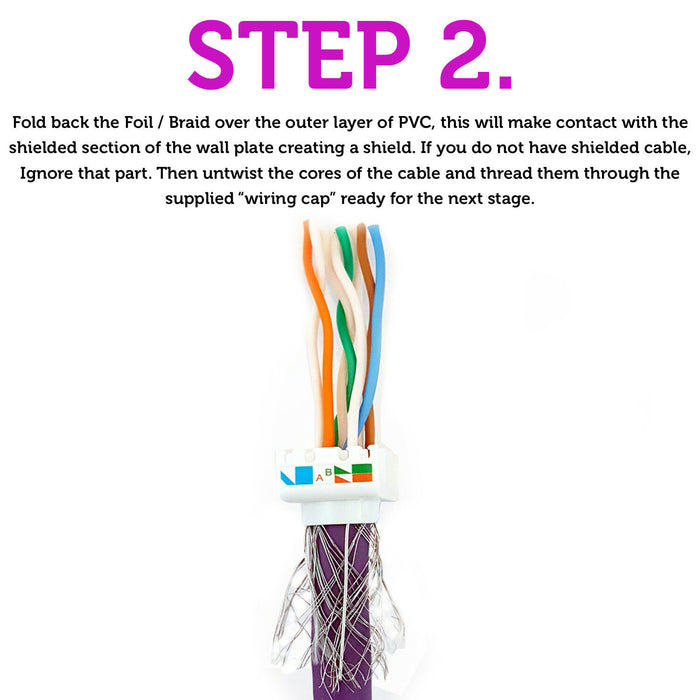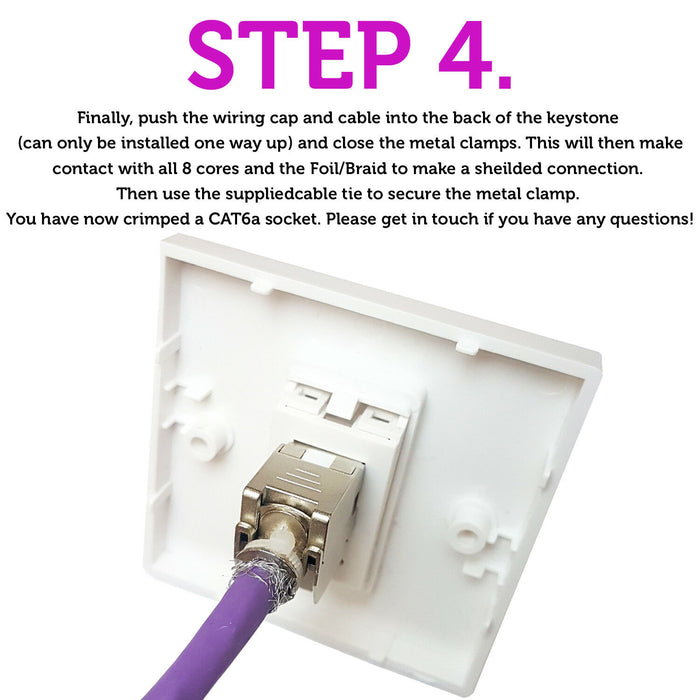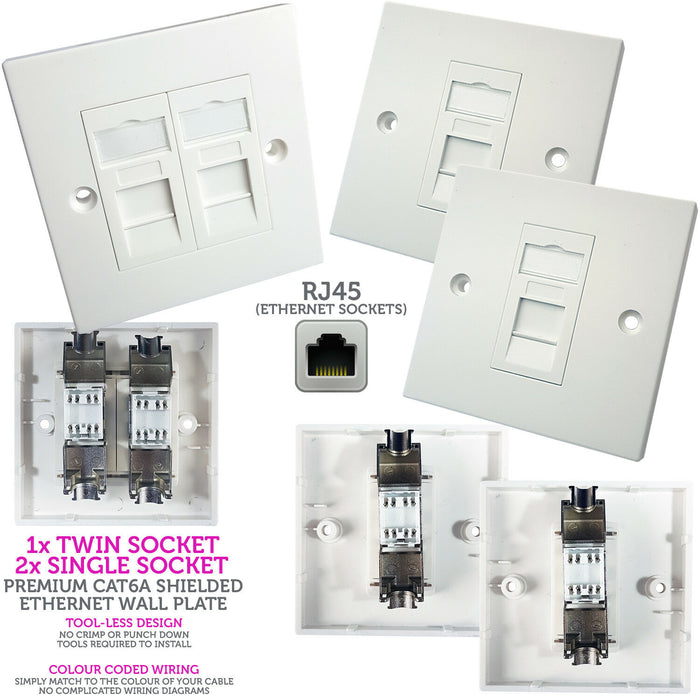
Double & 2x Single CAT6a Shielded Wall Plates RJ45 Ethernet Data Socket Outlet
BUY ANY 3 ITEMS & GET 5% OFF. ENTER "BUY3" AT CHECKOUT.
1x Double & 2x Single RJ45 CAT6a Shielded Wall Sockets Kit
Kit – This listing is for 3 wall plates – 1x Double Plate & 2x Single Plates
50mm x 25mm modular RJ45 CAT6a keystone socket (can be labelled)
Can be used over distances up to 100m/328ft for networking purposes @ speeds of 10GBps
TIA/EIA-568-B UTP wiring layout
IDC termination points
Fits a standard single back box
Fixing screws & accessories supplied
No punch down tool is required
Used for - This kit is designed for feeding 2 rooms with faceplates into one neat and compact faceplate at a central/other location. We also stock a CAT5e & CAT6 version, please search our shop or get in touch for more details.
These network outlet faceplates are a perfect fitting for cables that have been run between rooms beneath floors and behind walls. The faceplate is fitted to a standard single back box using the included fixing screws, just like an aerial socket or power outlet. The wires can be attached to the IDC terminals at the back of the sockets in just a few minutes and NO TOOLS are required to do so.
The use of IDC connectors on these wall plates means the connector itself pierces the wire’s plastic insulation as it is pushed in, thus making installation as easy as possible. The colour coding on the back of each IDC terminal is an easy alternative to complex wiring diagrams.
Installation - After running a CAT6 cable between the two points on your wall, strip off a short section of the outer cable insulation and follow the colour coded labels on the push termination cap (see picture). Simply push the correct cores into each terminal (not all the way). Once all cores are lined up, pop the cap on and push down into place, this will crimp the cores onto the cable. You can then close up the metal seal and use a cable tie to secure everything in place.
SHIELDED Connectors – When using a shielded cable, simply expose some of the shield on the cable and ensure that it makes contact with the metal shell when you close it.
Pictures above show how this works but please get in touch if you require any advice.
Wiring - Depending on the application in which you hope to use it, the socket can be wired in both the ‘straight through’ or ‘cross-over’ configurations.
'Cross over' cables are usually used for connecting 2 computers directly to one another, without the use of a Hub or Router. They use TIA/EIA-568-A wiring at one end, and TIA/EIA-568-B at the other.
'Straight through' cables can be used for connecting a PC or games console to a Hub/Router, or, in conjunction with AV extender devices, for audio and video distribution throughout a home or commercial project. To create a 'Straight through' cable, it should be wired using the same wiring variant at both ends. Either ‘TIA/EIA-568-A to TIA/EIA-568-A’ or ‘TIA/EIA-568-B to TIA/EIA-568-B’
